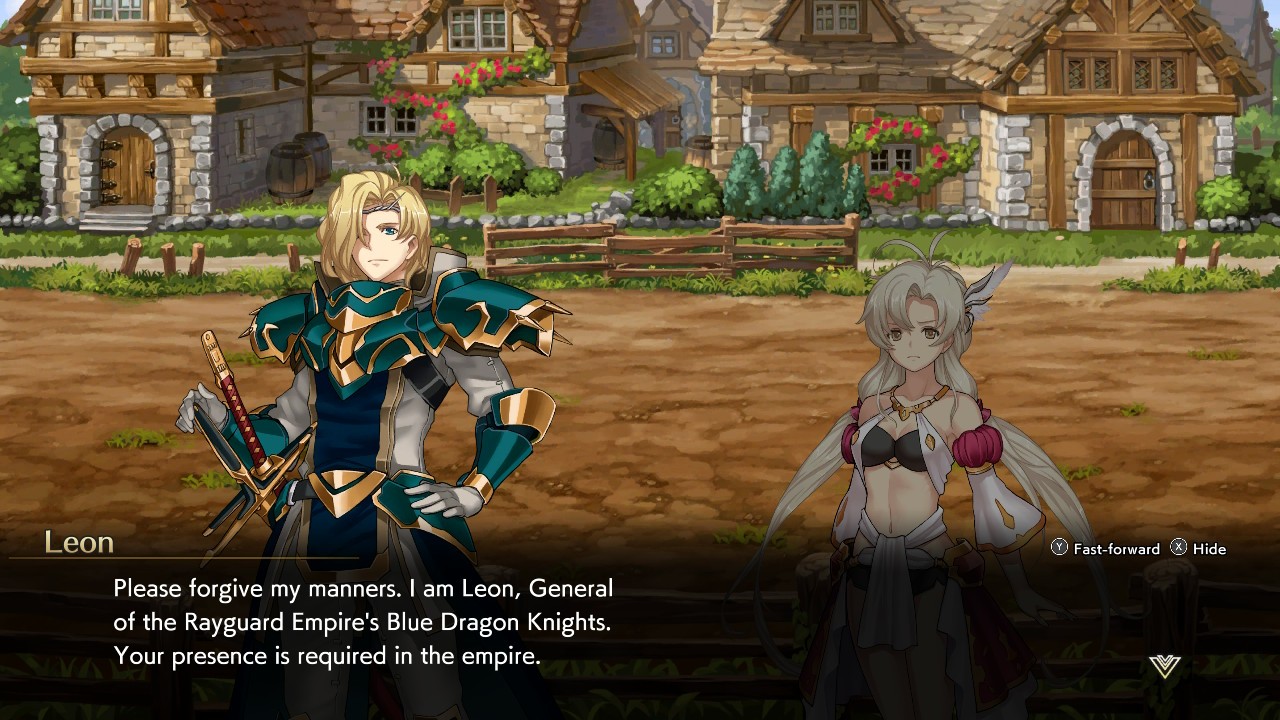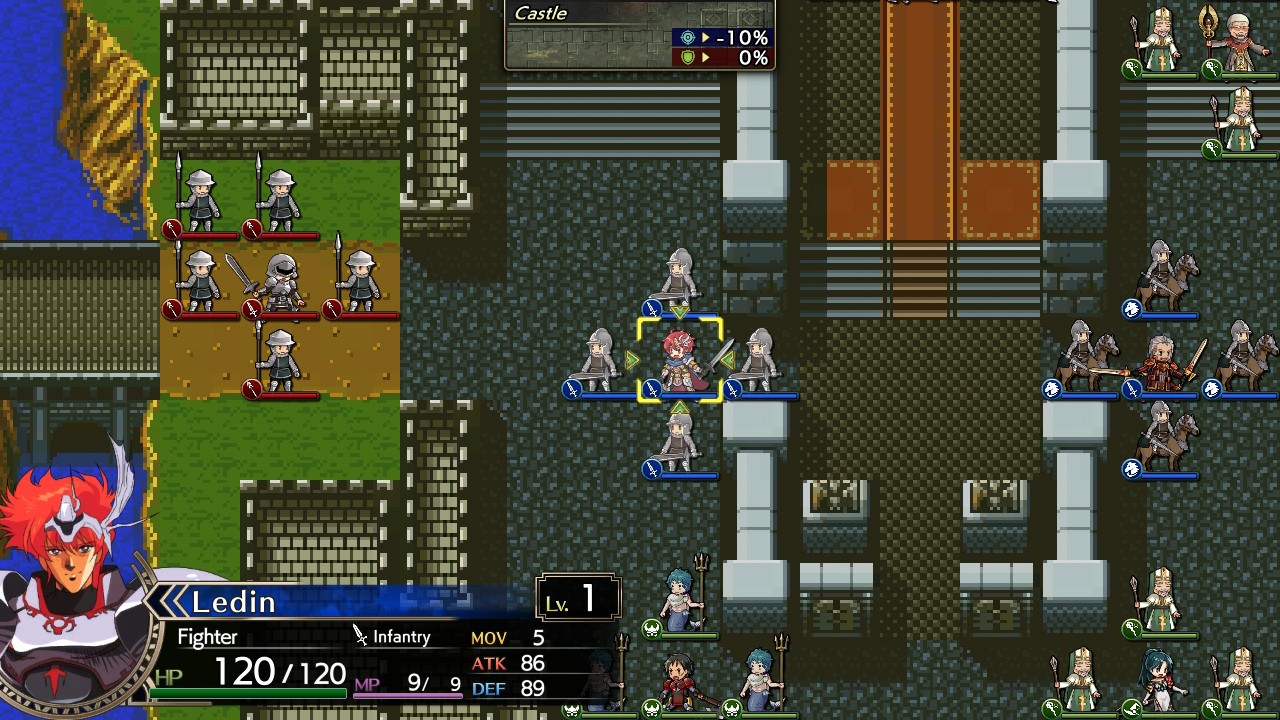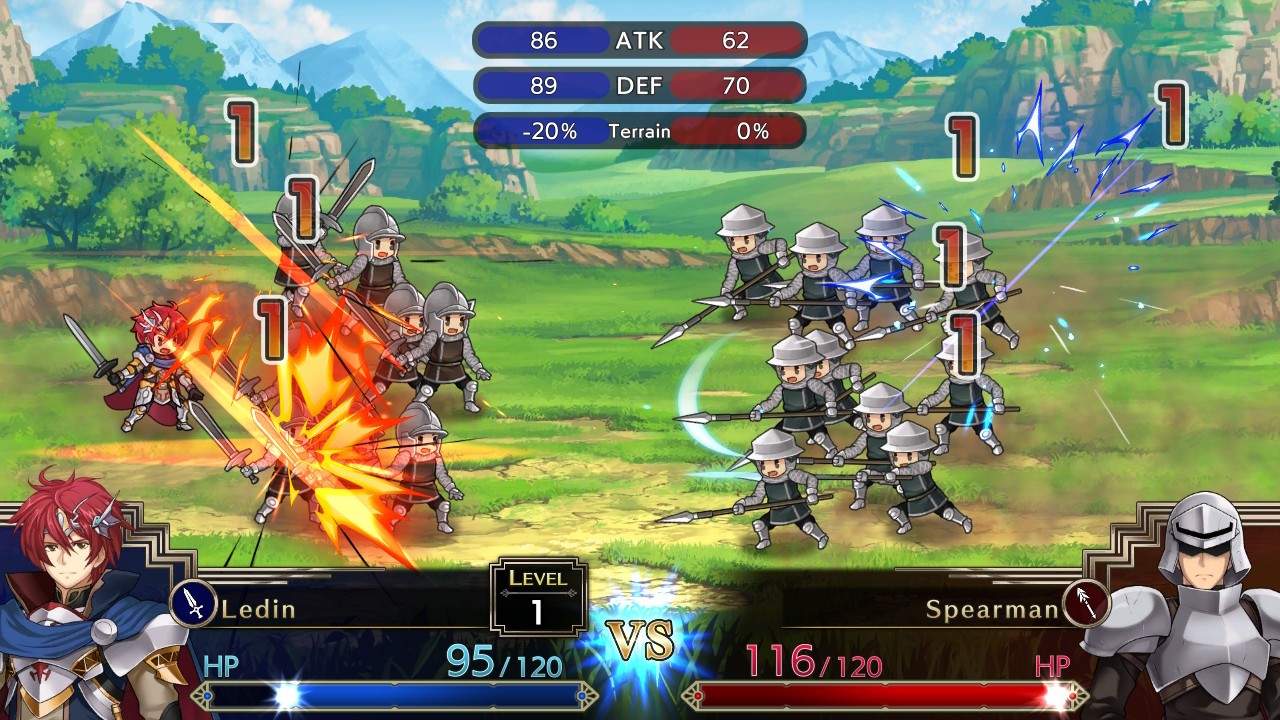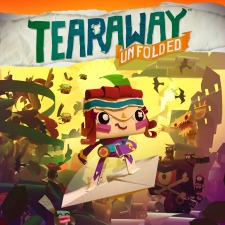
The Langrisser series are a set of SRPGs that have absolutely never cropped up on my radar. It doesn’t help that very few of the titles ever made it to the Americas, and the first one, which was renamed Warsong, was released for the Sega Genesis as opposed to a Nintendo system. Seriously, I don’t mean to be that guy, but it really was an era where it was one or the other: if you were rich and owned both, you were clearly above reproach and also my friendship. But, in any case, it’s interesting to see these remastered titles debut on modern systems and give new and older players a chance to view something with fresh eyes. In this case, NIS America has decided to bundle the first two games of the series together with the option to toggle on remastered graphics. The result, the Langrisser I & II Collection, is a fascinating view into the beginnings of what became an acclaimed series.
You should know there is zero continuity between the two Langrisser games, so feel free to start wherever you’d like: the save files are separate, and you can toggle the remastered and original graphics from the main menu. There are plenty of save slots for each game, allowing players to take separate journeys if you’re inexplicably sharing one game with multiple people but only one NNID. However, if at all possible, I do recommend that you play the first game before the second one. Not only is the first one far more forgiving in terms of difficulty and certain objectives, it allows you to appreciate how far and how fast the game series evolved between the flagship iteration and the first sequel. While three years apart, it feels like a decade of innovation was concocted, as the second title allows for some elements that we’ll get into in just one moment.
The name of the game for Langrisser is longform strategic combat with very, very little happening inbetween. Unlike the gold standard of SRPGS (Final Fantasy Tactics), Langrisser I & II waste no time injecting cutscenes, dialogue or even a real mapwork between the different chapters. Instead, being in the warzone is where the storyline unfolds, and this is something that’s deeply compelling. Langrisser uses a solid but concise amount of exposition during the skirmishes, and these remastered versions are totally voiced. Whether you’re in the mix with the first game and following Garett’s exile that leads him down a path of worldly heroics (first game), or Erwin’s forked destiny to either embrace the light or reject it (second game), you’re in for a treat with some solid action acting. It actually brought back some fond memories of an anime series called Record of Lodoss War, which was rife with serious, long-form talks during the horrors of a classic Germanic battle scene. I have no evidence that this is how the original games were treated or if the voices were a result of the remaster, but it’s pretty well done, giving more excitement to what would otherwise be a lot of reading between endless fighting.

Patience is the name of the game for Langrisser, and I hope you’ve got plenty. The heroes in each party are fighting forces unto themselves, and each hero can summon a limited number of mercenaries to fight on behalf of them. So Garett can get a bunch of grunt soldiers to be a part of this squad and operate independently, allowing for more layers of strategic planning. Heroes alone have access to certain actions, like using healing and long-range combat skills on their turns, whereas the mercs can move into position and attack or defend, respectively. If you want to move things along, the hero can basically give a command for a general plan (attack, defend, charge, etc.) and then you can let the AI do all the extra work, and, for earlier battles, I would recommend it. The battlefield can be pretty big, and you might need to speed through the first five rounds of combat before you even really need to start making big decisions, though don’t get cocky: Langrisser can rear up and bite you hard in a second.
There are a lot of things that make the games unique. The skill tree between rounds lets players evolve their heroes into different classes, which ultimately lead to beautiful final forms that potentially can have devastating effects on the different enemies. There are plenty of items to be found in the shop between battles, and there are even secrets to be discovered in the thick of it if you’re willing to use a unit to go and venture outside of the main fray. You do need a fair amount of strategy to consider when going into each battle: things like different units (lancers versus monks), terrain advantage (swamp versus highground), and the level of the hero can sway how the tides go. In a lot of ways, this approach makes the game very interesting and appealing to true strategy enthusiasts. You can outfit your troops and tell them where to go, and you can weigh how the odds are for or against them, but the combat itself is totally out of your hands. Once troops engage, you just hope dice and numbers say that you lose fewer troops than the enemy.
As both games progress, you’ll be able to acquire more allies and thus expand your army, creating different leaders and affecting the tide of battle, and this is where it becomes important to play the two games sequentially. In Langrisser I, you forge ahead on the side of good, going along for the ride and seeing what happens as you become more adept at focusing your troops, at making sure you stick within set battle parameters (rescue this person and don’t die!), and at understanding the tone of the game. There is a dramatic, almost kabuki-esque story being told through the art of battle, and it unfolds slowly, giving you a chance to see Garett come to terms with what he needs to do with the kingdom, the hunt for allies and legendary artefacts and such. It’s a bit of a paced game, but one that comes with plenty of chess-like mulling inbetween, intersected with the amazing soundtrack that should never be overlooked. Iwadare Noriyuki, who did compositions for both games, was a master of his time (still is, too), and Langrisser I sounds amazing and is honestly impressive for the time period.

With Langrisser II, however, you see this amazing tonal shift that’s both good and maddening. On the one hand, you now see the story progress in a potentially branching pattern, something that I couldn’t fathom from a game that came out in 1994. You can see Erwin struggle with what he believes to be right or wrong as he quests for the titular Langrisser and seeing that the world isn’t as simple as he suspected. Developing ideas of siding with evil, or chaos, or justice or whatever is actually pretty amazing, and the game delivers multiple paths and endings, including ones where Erwin is really the worst person to come out of the whole damn thing, and he was the chosen of the overly-busty goddess Lushiris from the start. Oh, by the way: I recommend sticking to the classic graphics for each game. They have that sort of beloved 90’s anime feel to character design that makes everyone kind of Elven and it works. The remastered graphics are a little too heavy in the smoothed angles and polished corners, and the boobs are oddly proportioned to the point of absurdity.
Langrisser II also is insanely difficult, which is the other side of the sword. Whereas the combat of Langrisser I would mean even the simplest battles would take upwards of 45 minutes, the very first Langrisser II battle took me an hour AND I LOST. I lost to the prologue, essentially. The difficulty is high, and, strategy aside, Langrisser II seems to have a particular path the game expects you to take in order to achieve victory, and it’s a lengthy trial-and-error to discover where you need to be when the enemy makes their move in order to be victorious. It turns from an ebb and flow sort of battle into a quest to see how much you remember from the last time you got it handed to you and what you can do to prevent it. That’s a strategy of sorts, I guess, but it felt more like a game of Simon with swords, and it would have been an absolute slog if I didn’t have a grand time with the voice acting and the fun battle animations when everyone actually got engaged.
For the price tag, players will get an astounding amount of gameplay value from the Langrisser duology, and the portability is worthwhile to the collectors looking to hold a great piece of gaming history that never got a proper Western perspective. Don’t overlook this if you’re a fan of Fire Emblem and wanted to see what life was like in the other consoles: turns out Sega had the same as Nintendid, just in different flavors.
REVIEW CODE: A complimentary Nintendo Switch code was provided to Bonus Stage for this review. Please send all review code enquiries to press@4gn.co.uk.
Subscribe to our mailing list
Get the latest game reviews, news, features, and more straight to your inbox
Thank you for subscribing to Bonus Stage.
Something went wrong.
Langrisser I & II Review
-
Gameplay - 8/10
8/10
-
Graphics - 8/10
8/10
-
Sound - 8/10
8/10
-
Replay Value - 8/10
8/10
Overall
Summary
Some of the best strategy games of the 90s make their debut on the Switch in all the retro flavored presentation you could hope for.





